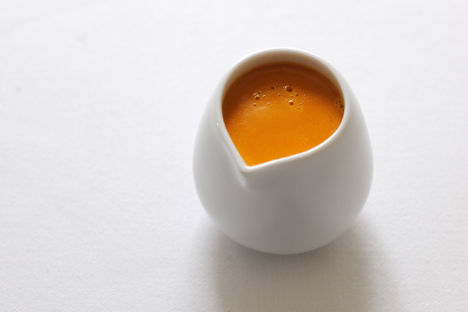
The original French mother sauces
July 14th marks Bastille Day, and is the perfect excuse to brush up on classic French techniques and culinary know-how. Mastering the basic sauces of French cooking is the perfect springboard for creating many classic recipes, so brush up on your knowledge and try some at home.
The original French mother sauces
The French revolution marked a huge change in the political, cultural and social landscape of France, with ripple effects throughout the whole of Europe. July 14th commemorates the storming of the Bastille prison in 1789 which sparked the beginning of the revolution. One year later, the French celebrated their unity at the Fête de la Fédération on the Champs de Mars, and a new wave of innovation and development began.
Cooking during this turbulent time was Marie-Antonin Carême, one of the forefathers of classical French cuisine. Often considered the first ‘celebrity chef’, Carême is most famous for having identified the original ‘mother sauces’ of modern cooking: Béchamel, Espagnole, Velouté and Allemande. Many hundreds of sauces have derived from these originals over the years, most famously with chef Auguste Escoffier in the 1900's adding Hollandaise and Sauce Tomate to the mother sauces and removing Allemande as it was a product of Velouté.
Béchamel
Béchamel is commonly associated with lasagne and cauliflower cheese but can also be used as a base for other sauces such as mornay, soubise and mustard. It is traditionally a milk-based sauce, thickened with a roux of flour and butter. Learn how to make béchamel with our easy hints and tips.
Espagnole
Espagnole covers all sauces made from dark stocks, such as beef or veal, thickened with a roux (more commonly known as the humble gravy here in Britain). Over time chefs have moved away from the thickening of meat sauces with flour in favour of pure, clear sauces that are thickened by the naturally occurring gelatine in animal bones. This can be time consuming, so thickening with flour or a roux is still often favoured by home cooks.
Velouté
Velouté is conventionally made with a light stock and again thickened with a roux. Chicken, fish and rabbit stocks all were used for velouté, but the word in recent years has become synonymous with cream-based sauces. Have a look at our velouté collection which includes Paul Ainsworth’s Pumpkin velouté and Tom Aikens’ Poached Turbot with artichoke and Sauternes velouté.
Allemande
Allemande, is a velouté sauce thickened with cream and eggs, creating a very rich and velvety result. The French translation of Allemande is ‘German’, although the reason for this name is unclear. In the early 1900s Escoffier renamed this Sauce Parisienne due to tensions with Germany at the time, and it is also sometimes known as Sauce Blond. For added flavour, Carême would often use mushrooms and nutmeg in its preparation.
With the various gelling agents and thickeners now available, sauces can now literally be made from any liquid and thickened to any consistency without the use of flour, eggs or cream. This creates the opportunity for much lighter, fresher sauces to suit a huge variety of recipes, but it is worth remembering the origins of these fundamental elements of some of our favourite dishes. If you can master these, the world of fine cuisine is at your fingertips...


